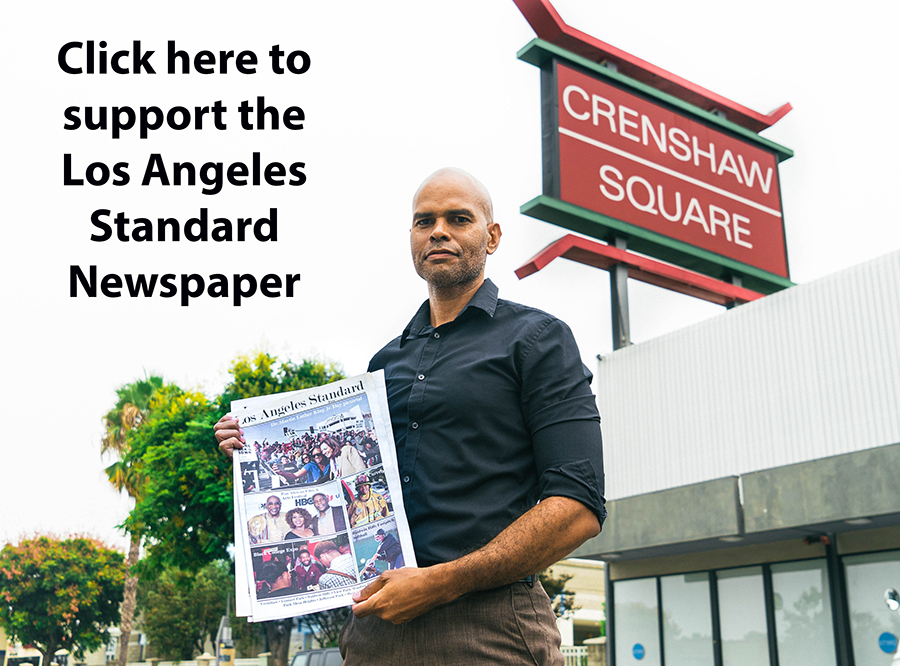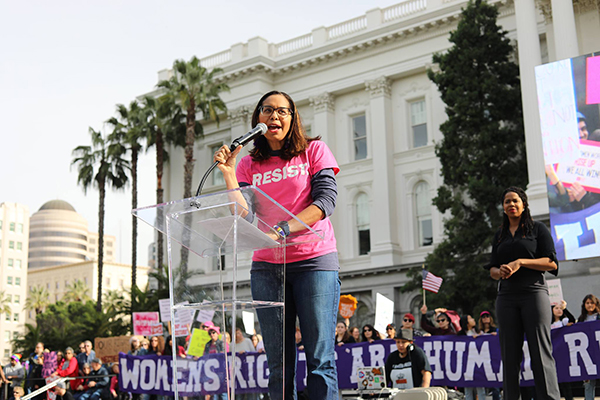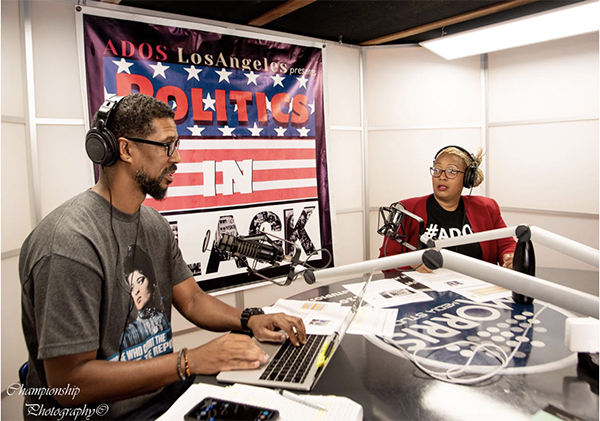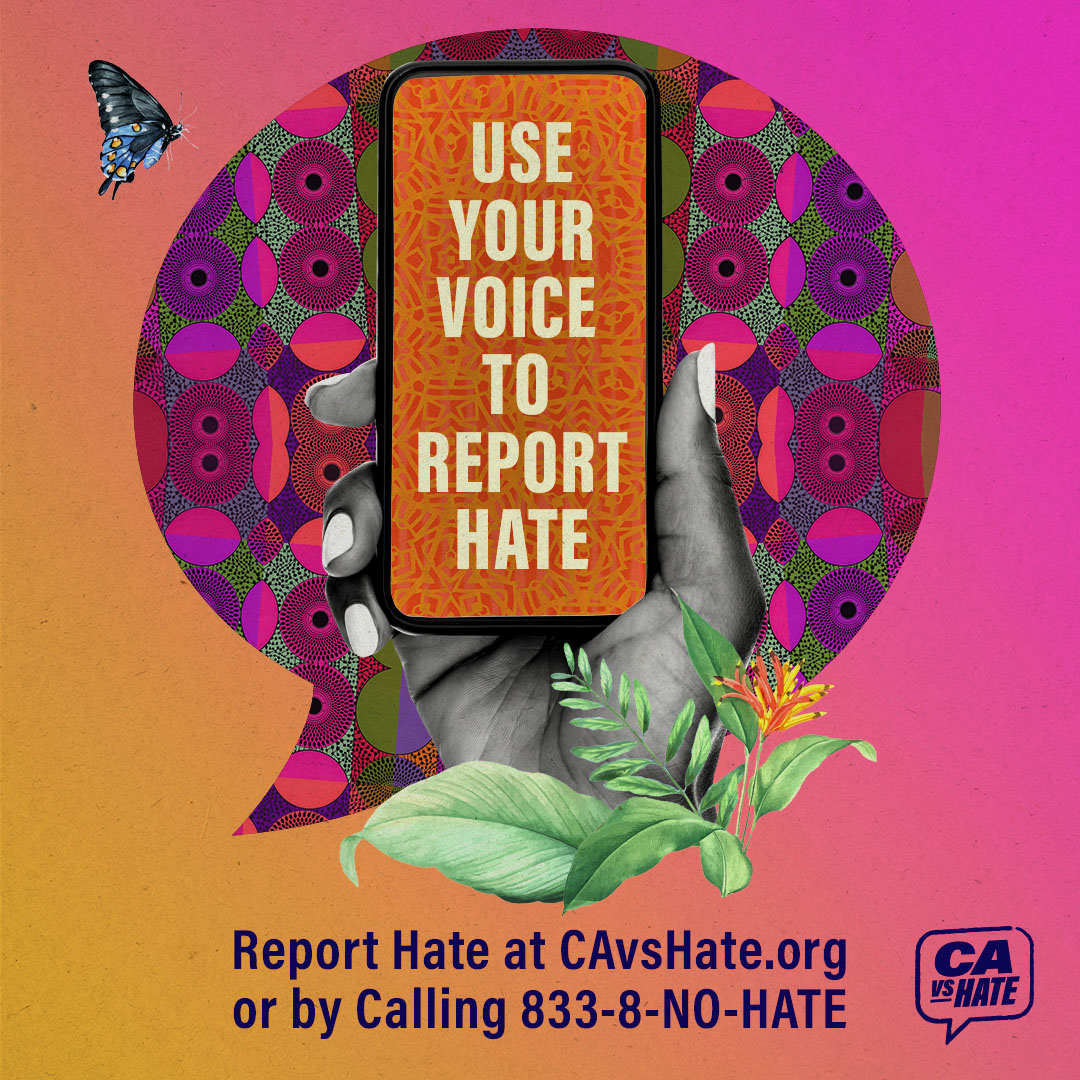California bill to address reparations; NAASC-LA discusses why Black Americans are owed reparations, how it can close the wealth gap, and what the Black New Deal entails.

By Jason Lewis
Since George Floyd was killed under the knee of a Minneapolis police officer, the U.S. has been going through a racial transformation. Racism and the plight of Black America is finally being addressed. However, many of the changes have been symbolic in the form of painting “Black Lives Matter” on streets and buildings and removing Confederate statues from public places.
While the symbolic changes are welcomed, California politicians and local community service organizations are pushing for more substantial changes. Namely reparations for African Americans who are dependents of people who were enslaved in this country.
Bill to study African American reparations passes California Assembly and Senate

The California Legislative Black Caucus has made reparations a top priority, and bill AB 3121 has been passed by the California Assembly and Senate. The bill is now heading to the Appropriations Committee and then to Governor Gavin Newsom. If Newsom signs the bill, an eight-person task force will be created to study and prepare recommendations for reparations.
“This will be the first of its kind for any state,” said 54th District Assemblywoman Sydney Kamlager, who’s district includes portions of South Los Angeles, Mid City, and West Los Angeles. “We have as a country been derelict in acknowledging reparations for African Americans. We talk a lot about slavery. We talk a lot about racial and economic injustices placed upon African Americans. But we always stop short of talking about reparations. So this would be an enormous feat to have this bill signed into law by the governor because it acknowledges the economic apartheid that African Americans in California and across this nation have suffered under. And it forces, at least California, us to reckon with our past, but also our current dismissiveness of the plight of African Americans.”
While this bill only applies to California, the theory is that it could lead the rest of the nation to take action.
“Oftentimes people say that California is a bellwether state,” Kamlager said. “What first happens in California does tend to trickle down to other states across the country.”
This would be the case with the Crown Act, which prohibits discrimination based on hair style and hair texture, and the Police Use-of-Force Bill, which redefines the circumstances under which the use of lethal force by a peace officer is considered justifiable.
Kamlager encourages locals to contact their California senator and ask them to support this bill when it goes to the senate floor.
National Assembly of American Slavery Descendants Los Angeles looks to close the wealth gap

The National Assembly of American Slavery Descendants Los Angeles (NAASC-LA), formally American Descendants of Slavery Los Angeles chapter (ADOS-LA) was founded to localize the nationwide push for reparations and a Black agenda. African Americans who are the descendants of people who were enslaved in the U.S. have been excluded from several government wealth building programs that White communities have benefited from for multiple centuries.
“A Black family has on average one-tenth of the wealth of a White family, and we’ve pretty much been here the whole time,” said Chad Brown, spokesperson of NAASC-LA. “Looking at the racial wealth gap, Black Americans, ADOS, are at the bottom of every measurable social economic indicator. You look at healthcare outcomes, housing outcomes, wealth outcomes, income outcomes. You can even look at income and wealth as it relates to education outcomes. We’re at the bottom of all of those metrics.”
People who object to the idea of reparations tend to point out that slavery ended 155 years ago, so Black people have had more than enough time to catch up. But those people fail to see that Blacks were excluded from several government programs that allowed White Americans and immigrants from Europe to build wealth.
As the nation expanded West, the Homestead Acts from 1862 through the 1930s gave land to White Americans and immigrants from Europe but excluded Black people.
As a part of the New Deal of the 1930s, the United States Housing Authority was created. This department made it easier for White people to obtain home loans while Black people were excluded from this program for the most part. Redlining was created to ensure that Black people did not participate in this home loan program, and so that communities would remain racially segregated. This segregation led to the ghettos that many Black people still live in today.
White America used these land and home-loan programs to build the wealth that they still have today. This is wealth that Black Americans were unable to build.
“We all know that home ownership has been the fundamental basis of American wealth since the founding of this country,” Brown said.
Black soldiers who returned home after fighting in World War II in the mid 1940s were unable to receive GI Bill benefits, which included home loans. But White soldiers were able to participate in the housing boom. The GI Bill also included educational benefits which Black veterans were unable to take advantage of.
The property tax from homes helps fund public schools, so a community of home owners will have better schools to send their children to than a community of renters will. That is evident as many schools in predominately Black communities are under funded.
“Reparations is not only for slavery,” Brown said. “It is also for the ensuing institution of Jim Crow segregation. That institution continued well into the 1960s.”
The end of the Civil Rights Era in 1968 outlawed overt racism, but it did not end various forms of oppression from the government.
“After the 1960s, we can also enumerate institutions of mass incarceration, over policing, and gentrification,” Brown said.
From the beginning of the 1900s through 1970, there were roughly 350,000 people who were incarcerated at any given time. With the War on Drugs that begun under President Richard Nixon in the early 1970s, the number of incarcerated people rose to over 500,000 by 1980. During President Ronald Reagan’s two terms, financial resources to improve communities were cut and drug use was criminalized. By 1990 there were over one million people incarcerated, many of which were Black. The number of people incarcerated continued to increase into the 21st century, with 2.3 million inmates in 2014.
“The list goes on and on,” Brown said. “The government policies are selecting winners and losers. But fundamentally you can draw a straight line back to all policies and marginalization of Black Americans, ADOS, in this country, right back to slavery and the immediate reconstruction period that followed institutionalized chattel slavery.”
Many conservatives say that Black people need to pick themselves up by their bootstraps, but that is not what White America did to build their wealth. The government gave them handouts in the forms of home loans, small business loans, and educational resources.
“What we see is a consistent historical pattern of the U.S. government giving opportunities for wealth building and even propping up White Americans, who were preferred and selected to be winners in American society,” Brown said. “While on the opposite hand, choosing Black Americans, ADOS, to eat all of the failure of this country. That has been systemically written in and codified into the laws of this country and into government policy.”
There are no studies that shows that White Americans have an innate ability to build wealth and become educated that Black Americans do not have.
“There’s nothing inherent within Black people that causes us to be in the position that we are in today,” Brown said. “It is truly the U.S. government picking winners and losers. I do not buy into the pathology that Black Americans are inferior or deficient in some manner. All throughout our history, when we’re given opportunity, we flourish on a grand scale.”
Many White conservatives chastise Black Americans for high crime rates within Black communities, but the crime issue can be attributed to poverty. According to University of Minnesota professor Samuel L. Myers, Jr. - one of the foremost experts on race, poverty and crime - poorer employment opportunities and lower wages are statistically related to higher crime rates. The reasoning is that lower wages in legal labor markets make activities in illegal markets more attractive and render conventional deterrents to criminal activity (increase certainty and severity of punishment) less effective.
Myers goes on to point out that poorer neighborhoods often become hotbeds of crime, particularly violent crimes, where ironically poor police response rates to domestic violence calls or calls regarding shootings are slower than they are in White suburban communities. And, the police reactions to the calls in poorer neighborhoods are often more violent.
Lastly, Myers points out that imprisonment of Black males has had a long-term impact on family structures in the Black community and has affected income levels. In this instance, the direction of causation is not poverty causes crime but rather imprisonment and crime cause poverty.
In order for Black America to flourish, NAASC-LA is calling for a Black New Deal, which includes reparations and large-scale initiatives for home ownership assistance, business financing support, fully endowing all historically Black colleges, guaranteed government contracts for Black businesses, and free medical care.
“That would be inclusive of direct payments to American descendants of slavery, but it’s also going to fund programs that specifically benefit the American descendants of slavery,” Brown said.
Brown points to the work of Dr. William Darity Jr., who wrote the book “From Here to Equality: Reparations for Black Americans in the Twenty-First Century.” Darity says that reparation would cost between $10-12 trillion.
“Supporting reparations is truly the solution to all of the inequality that we’re seeing between ADOS, White America, and the immigrant population,” Brown said.
NAASC-LA has recently held meetings with Congresswoman Karen Bass and Los Angeles Mayor Eric Garcetti, and they hold townhall meetings on Facebook Live and YouTube.
To support NAASC-LA’s efforts and to get involved, visit www.naasdla.org and follow them on social media.











